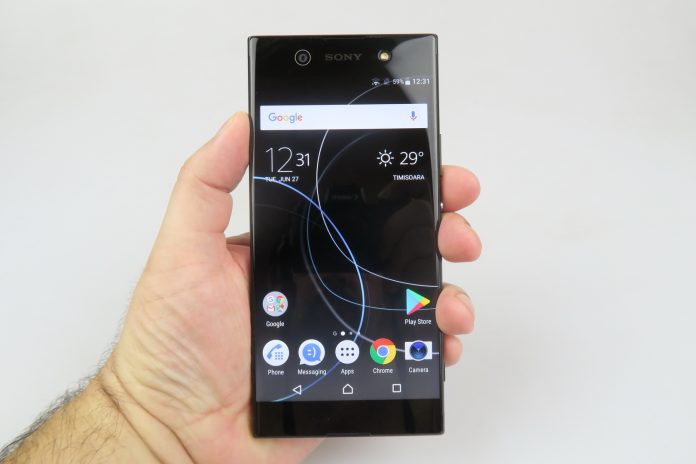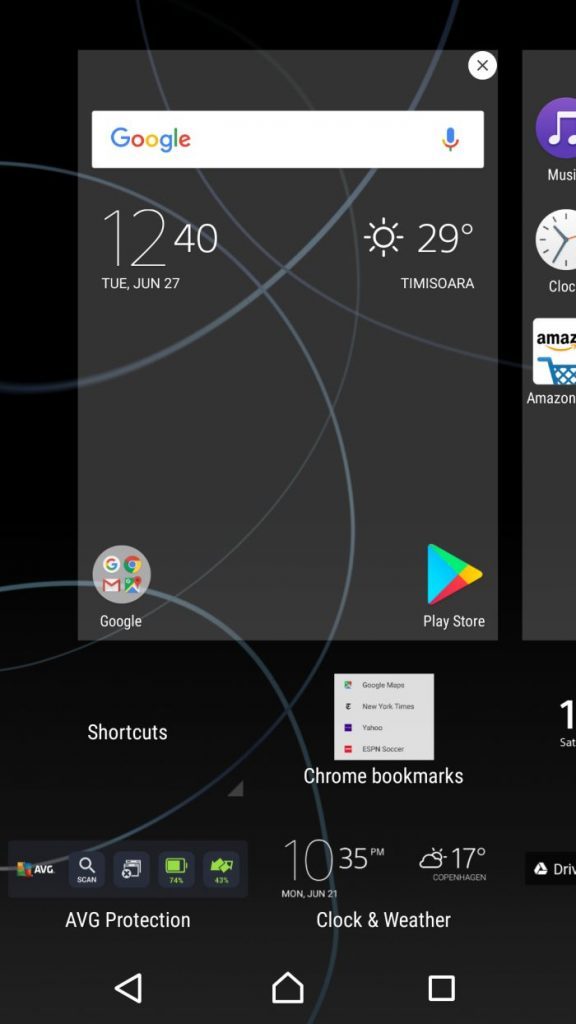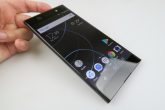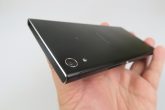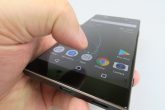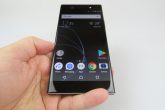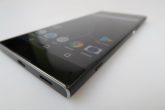I’ve seen many tablet makers quoting the high interest in phablets as one of the reasons why the tablet biz is dying and has been dying for a long while. And seeing the quality of phablets like the Xperia XA1 Ultra I start to understand what they mean. Unveiled at MWC 2017, this is basically the big version of the Xperia XA1, priced at around $400 right now.
We tested it this summer and actually had a bit of a vacation while playing it. This made the device double useful, as it was used to watch videos while travelling and also take selfies, pics and front camera vids. It’s no coincidence, since the front camera actually has optical image stabilization, something I haven’t seen from the HTC 10 days.
Anyway, you should know we’re dealing with a massive 6 inch device here, one that ditches the waterproofing of so many Xperias. It’s quite an elegant proposal, with a polycarbonate back, metal frame and a 2.5D glass panel. The waistline is at 8.1 mm and the weight is 188 grams, identical to the iPhone 7 Plus, but at a much larger diagonal. This is probably the narrowest 6 inch device I’ve seen and used, which makes it comfy to handle with a single hand.
It’s however meant for landscape usage, as you’ll figure out the first time you start watching videos on it. Quite an OK build and design, typical for an Xperia and now let’s discuss the screen. We’re dealing with a 6 inch IPS LCD panel with Full HD resolution and it offered us a brightness of 611 LUX units, beating quite a few modern flagships.
It’s the equal of the Xperia XZ actually and it’s top 5 all time for sure. Aside from the brightness we also get deep blacks, wide angles and an OK contrast. The colors were a bit on the cold side. The above mentioned brightness is superior to the Google Pixel XL and iPhone 7 if you really want a comparison. As usual Sony also included a bunch of Image Enhancement features, having to with color calibration and also an RGB slider. Font size and display size are also here. Surprisingly good screen I’d say and waaay above average.
We’ve reached that part of the review where we analyze the rest of the hardware and it seems that Sony went the cheap way, with a MediaTek CPU, the Helio P20. Even though it’s accompanied by 4 GB of RAM and 32 or 64 GB of storage, we did run into some lag at times, especially when using the device for a long time and also using the camera features.
Benchmarks don’t seem bad at first, with this Xperia surpassing the HTC 10 and OnePlus 3 in Quadrant, while AnTuTu 6 brought us above the ZenFone 3 and Moto Z Play, but also below the LG V10. In 3DMark Ice Storm Unlimited we did score in impressive manner, beating the Galaxy A5 (2017), but scoring below the ZenFone 3. I’d say we’re swimming in the same performance pool as the Galaxy A5 (2017) and the ZenFone 3, maybe above the former.
The temperature seemed OK as we scored 35.2 degrees Celsius in GFXBench, but it all went to overheating in gaming, where the game Riptide GP Renegade brought us to 43.2 degrees Celsius. A different CPU would have been welcome…
Now to the battery! It’s a 2700 mAh battery that scared me at first, since it doesn’t sound like nearly good enough for a 6 inch phablet. We expected at least 3000 mAh to be honest. Anyway, we did a video playback test and achieved 10 hours and 34 minutes, which is basically a whole season of TV shows, give or take 2 episodes. It’s superior to the LG G5 and iPhone 7 Plus, but also inferior to the iPhone 7 and Huawei Mate 9.
In PCMark we reached 9 hours and 38 minutes, which is not bad at all, certainly top 20 material. It beats the Galaxy S7 Edge and Huawei Mate 8 at least. Pixel XL is better though. Charging is done in 2 hours and 56 minutes, rather OK for this phablet. It’s superior to the Xperia M5 and one hour of charging brought us to 52%. The classic Stamina settings from Sony are here, offering extra usage time, by cutting some of the background processes.
There’s also Ultra Stamina, that only lets you use basic features. All in all a battery that totally beat my expectations. On the acoustics front, we get just one speaker at the bottom, although two would have been solid gold in tandem with the big screen, for the sake of video watching with beefed up audio.
The music player on board carriers the legacy of the Walkman player and comes with Spotify integration. It has a generous amount of options and settings, stuff like ClearAudio+, genre settings, 5 custom channels, Clear Bass, surround options and a dynamic normalizer. Special Sony headphone settings are also here. Anyway, we enjoyed the volume, bass and highs of the speaker.
The voice was nicely rendered in movies, but what turned me off was the huge difference between 100%, 70% and 50% volume level. Max works best. We also used a decibelmeter, scoring 86.1 dBA when listening to our acoustic samples, plus 100.7 when playing games or watching movies. I mean 100 decibels on a mobile? Sign me up and give up the laptop TV show phenomenon. Top 3 material for sure. Too bad we didn’t get any headphones.
Now let’s see if the camera is any good. We’re got a 23 megapixel main camera, with hybrid autofocus and Exmor RS sensor. It’s even got SteadyShot and the front camera is actually more impressive, at 16 MP, with OIS and a big, big flash. The camera UI is typical Xperia, but it does run into some lag when you really get into some of the options. The modes include Superior Auto, Manual with its extra options, like white balance, exposure, shutter, focus and ISO for example.
HDR video is also here and Scene modes too. Anyway, leaving these behind let’s talk about the gallery of shots we’ve taken. We started off with indoor shots, quite a few of them blurred sadly. Colors were OK, but if you started to zoom in, details were lost. Also, moving subjects were poorly rendered. The clarity was so-so, once again only indoors. Outdoors, I found the hue of green to be washed out and the brightness and exposure were OK
The Panorama had a generous resolution, at 21.504 x 3456 pixels and even though I didn’t like the green, the red hue was somehow better rendered. Closeups are good, but it takes a while to focus properly, a problem that all large resolution Sony sensors have. HDR makes things come to life more, highlighting their contours and such. The selfies started off blurry and I was ready for critique, but then they got good in the proper lighting, actually very good. I’m talking about face texture, color, clarity and all.
Even the background was OK. Back to the main camera, the 23 MP shooter delivered on its promise to offer flagship level details. We caught some great landscapes in areas of Romania like Bran or Brasov. Pretty nice for sceneries, that what I can say about the phone. Indoor shots are rather poor, though. Selfies are very good, so in the end a mixed bag overall.
I’d put it on par with the ZenFone 3 and Galaxy A5 (2017), but with more details. LG V10 is better indoors, by the way. Low light capture was another area we tested the phone in, registering big street light halos and a good flash, that lights up objects without burning them or making the area blue. Colors were reasonably calibrated, there’s some blue/green hue sneaking in, but the details were great.
Focus was excellent, clarity too. One thing that all of you should remember is the fact that low light shots take a while to pull off. It may take 2-3 seconds, or even more till the camera decides to take them, so be patient. And yes I know it’s annoying. The result is definitely not flagship level, but it can fight an ASUS ZenFone 3 and Huawei P10 Lite.
Now the videos are another affair, since Sony Xperia phones usually film great. First of all, the microphone was great here, the clarity was good indoors, but zooming in resulted in lost details. Not bad at first sight. Outdoors, we registered some burn from the July sun and the green hue was again messy. Dynamic range was poor and we shot videos in MP4, Full HD, 30 FPS and 17 Mbps. Texture and exposure were OK, plus the focus didn’t seem to provide any problems.
While the main camera is a bit of a hit and miss, the front one actually does its job fine. I used it for a few clips on holiday and was happy with the results. The stabilization is excellent and even though the exposure change is over zealous, the final result is great. Clarity, skin texture, colors, everything is great. The main camera actually has worse stabilization and as the videos went on and on the microphone lets us down when the wind came into play.
Low light video capture was too yellow and shaky to be memorable, rather washed out, but quite bright. There was focus loss during object tracking, some grain and not so good colors. This is clearly below expectations and below the day time video capture. The front camera is the only memorable bit of the experience. We move on to software and connectivity now.
The web browser of choice here is Chrome and it offered a mid level speed, but somehow not very impressive benchmark results were achieved. SwiftKey and Swype are part of the input experience. On the connectivity front, everything is top notch, with 4G LTE Category 6, USB Type-C, single SIM or dual SIM versions of the phone and GPS and Glonass.
There’s WiFi dual band, NFC, Miracast, Bluetooth 4.2 and Google Cast. Calls are loud and clear, the signal was good and noise cancelling was also nice. SpeedTest was also done and revealed good results, like 98 Mbps in 4G download and 30 Mbps in upload. On WiFi we got to 76 Mbps in download and 25 Mbps in upload, so we’re within limits. Sony Xperia XA1 Ultra runs Android 7.0 Nougat with the typical Xperia UI on top.
It’s got a carousel multitasking, a minimal UI, filled with white and blue segments, plus side menus. The widgets are all minimalistic and white, there’s themes and wallpapers that are a bit throwback to the PlayStation experience. There’s icon size, icon pack and effects also here. Google Now is available in the leftmost homescreen and the dropdown bit features Quick Settings and notifications. Settings include connectivity options, one hand usage and other such things. There’s no fingerprint scanner here, sadly.
On the apps list we found 44 names, which is quite a lot, but you can delete quite a few of them. PlayStation is among the preinstalled apps, plus Movie Creator, Spotify, Sketch, AVG antivirus and Track ID for music detection. That’s about it folks, so now let’s see the verdict.
Here are the Pros:
- great for video watching, binging
- bright screen
- great front camera
- solid battery
- high volume
- OK software
- OK video capture
- great microphone
And the Cons:
- not constant main camera
- not waterproof
- no fingerprint scanner
- massive
- gets a bit hot when gaming
- some hiccups in performance/lag
- green hue problem in captures
Overall the Sony Xperia XA1 Ultra feels like a great vacation phablet, a vlogger and Netflix binger’s tool. It’s less of a tool for gaming and more of a tablet replacement. It’s good looking, comfy to use, great for multimedia purposes, basically a typical Sony product. Some camera hits and misses and the CPU may spoil the fun a bit, but they’re no deal breakers.
You can get this phablet here.
Post Footer automatically generated by Add Post Footer Plugin for wordpress.

